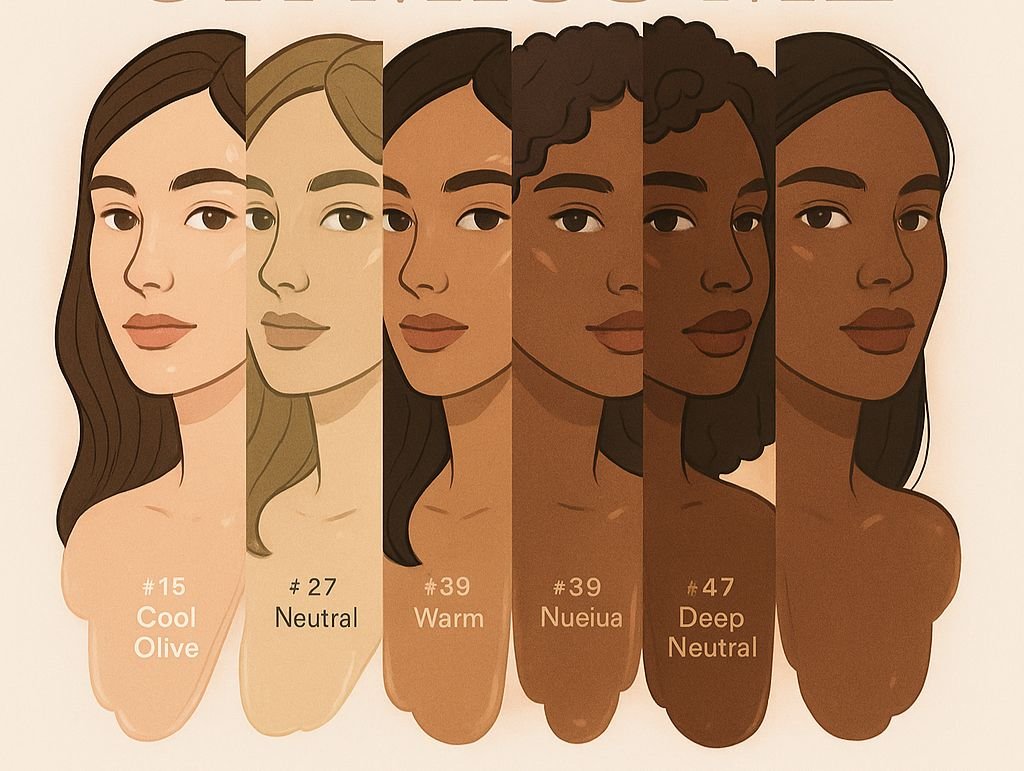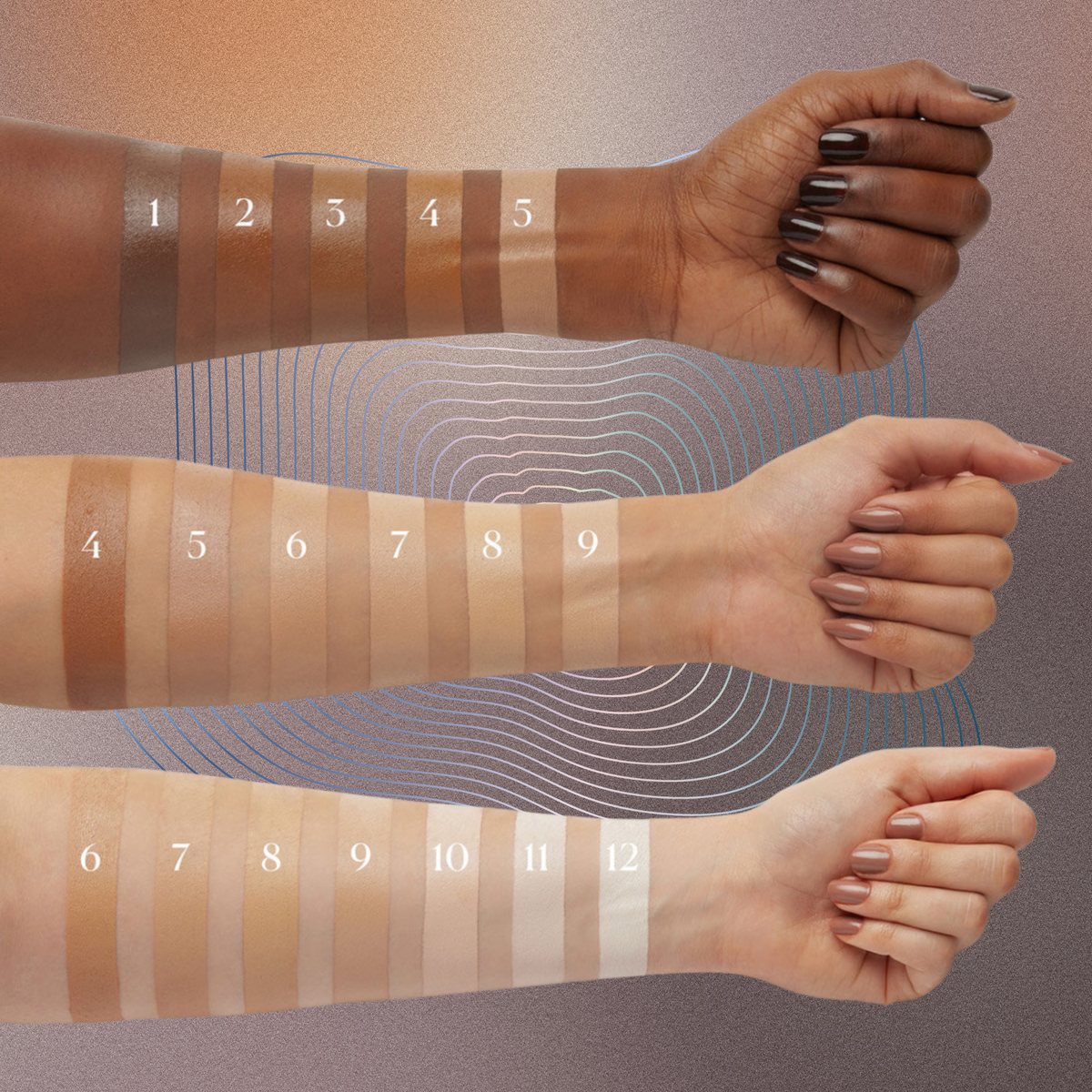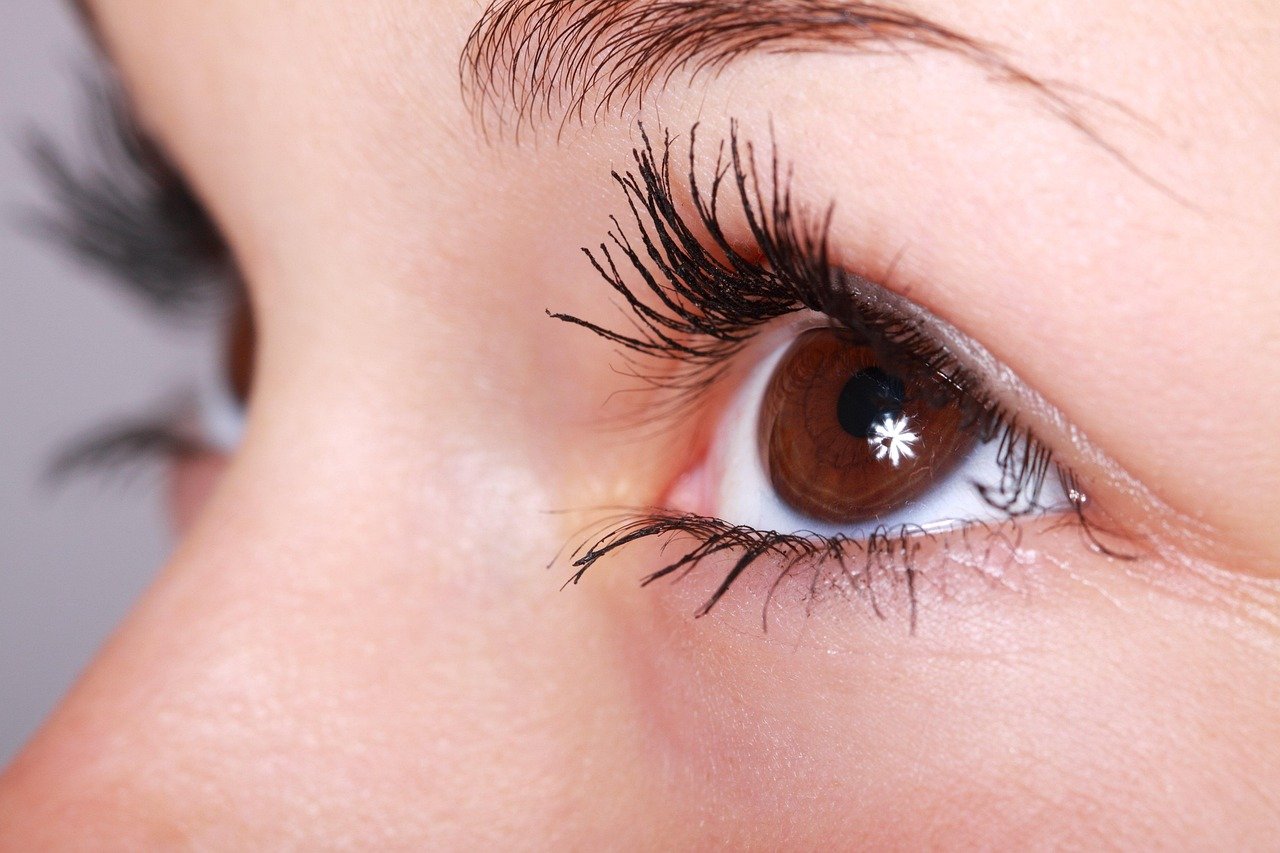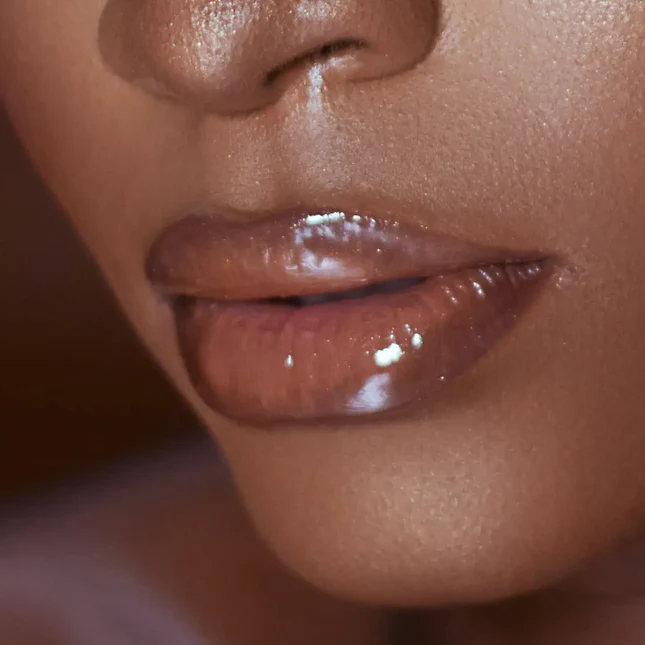How Inclusive Shade Ranges Became the New Industry Standard
50 Shades of Real- Inclusivity Isn’t Optional Anymore!
11 Jun'25
By Yugadya Dubey


How Inclusive Shade Ranges Became the New Industry Standard
Picture this: it’s 2017, and people everywhere—especially those with deeper skin tones—are still struggling to find a foundation that actually matches. The beauty aisles? A sea of beige. “Tan” was somehow the darkest shade available, and even that looked like beige with a sunburn. Shoppers were left blending mismatched shades like it was a DIY project.
hen—cue dramatic lighting—Rihanna enters the chat, Pro Filt’r in hand, and suddenly the beauty world goes, “Ohhh, that’s what shade diversity looks like."
Fast-forward a few years, and brands are launching 40, 50, even 60+ shades right out the gate. So, what changed?
Short answer: we spoke up.
Long answer? Keep reading.
The Fenty Effect: When a Launch Changed the Game
In September 2017, Rihanna didn’t just drop a beauty line — she dropped a cultural reset. Rihanna’s Fenty Beauty Pro Filt’r Soft Matte Foundation, launched with a groundbreaking 40 shades in September 2017 (later expanded to 50), tore apart the old beauty playbook.
As Vogue UK put it: "Forty shades became the new standard. Anything less was deemed apathetic."
Fenty Beauty launched with 40 foundation shades from the get-go, making every other brand look like they missed the memo. And what happened next was the real headline:
- The deepest shades sold out first
- Women of color posted their perfect matches — often for the first time
- Other brands scrambled to expand their shade lines… quickly
This moment coined what’s now referred to as “The Fenty Effect.” It wasn't about a celebrity endorsement. It was about being seen.
“It was like Rihanna said, ‘Hey, your skin matters, too.’ And that hit hard.” — @melanin.makeupdiary on TikTok
Brands like Maybelline, MAC, Huda Beauty, and NARS soon followed with expanded ranges. Suddenly, not having at least 30+ shades was seen as outdated, out of touch, and — let’s be honest — unacceptable.
Fenty raked in roughly $72 million in mere weeks and was featured in Time’s “Best Inventions of 2017” list.
Beyond sales, Fenty’s launch ignited a bold flame. It didn’t just encourage other brands to add more shades—it forced them to ask, “Why weren’t we doing this all along?” Suddenly, depth and undertone mattered in formulations.
Global Skin Tones and Beauty: Representation Isn't Just a Buzzword

Source: Very Good Light
It’s true—skin tone isn’t linear. It’s a rich tapestry of undertones, hues, and histories. And Fenty understood that. Its marketing campaigns championed models across the spectrum—shapes, colours, gender identities—and made visual representation part of the core brand DNA.
This representation wasn’t style-over-substance. Research from Trinity College found Black women aged 14–25 felt empowered seeing shades that matched their skin, observing a positive shift in how they viewed beauty and product accessibility.
And for beauty influencers like Nyma Tang, Fenty provided brand-new content opportunities—think of her viral "Darkest Shade" reviews highlighting deeper shades and finally seeing themselves reflected online.
But not all brands got it right—even if they tried. The backlash Youthforia faced over its darkest shade resembling "jet black paint" shows how critical authenticity and undertone accuracy are—and how quickly Gen Z-equipped consumers are to call out missteps.
Consumer Pressure on Brands
The modern consumer is powerful—and Gen Z particularly commands transparency and accountability. Social platforms like Instagram, TikTok and Reddit aren't just trends—they're movements. A single viral post can bring entire shade lines to light—and deep down, consumers are tired of lipstick-lighter-than-black foundations or brands that include dark shades only superficially.
One comment on a Reddit thread summed it up perfectly:
“If your brand is inclusive, put that information out! It’s not enough to market your foundation for dark skin the same way you'd do it for light.”
Consumers are also demanding transparency backed by research, not just spoken words. That’s why Arbelle’s Foundation Inclusivity Analysis tool now helps brands map shade gaps and plan more genuinely inclusive launches, proving that inclusivity isn't a trend—it’s a data-backed business decision.
Major cosmetic giants followed suit: Dior Backstage, Estée Lauder and MAC extended their offerings well beyond the previous norm. Revolution, Gucci, Rare Beauty (Selena Gomez’s 48-shade foundation) and others built inclusivity into their DNA—from formulation to marketing and social purpose.
Visual Representation: More Than “Ticking a Box”
Shade diversity is one thing; seeing yourself represented visually is another. Consumer behaviour studies show that inclusive content—images with diverse models—actually helps reduce biases.
Fashion and beauty marketing expert Amanda Grewal emphasises:
“Beauty brands need to promote inclusivity for all… It’s time that the beauty industry takes the steps to recognise that.”
But representation isn’t passive. Uoma Beauty’s founder, Sharon Chuter, highlights that shade range alone isn't enough—brands need diversity in-house and in imagery, or the campaign becomes performative.
Fenty continues leading the charge: representation in campaigns across Fenty Skin and Fenty Hair (e.g. summer 2024) remains authentic, celebrating body positivity and gender inclusivity with images that feel authentic—not tokenistic.
The Ripple Effect: A Permanent Shift
Oban International defines inclusive beauty as catering to all genders, ages, skin tones, types, religions, and races. It's no longer just foundation—shade diversity applies across concealers, bronzers, correctors, even skincare tinted products.
Global markets reflect this shift. K‑beauty, once notoriously shade-limited, is now expanding to match global demand. Brands like TIRTIR jumped from 3 to 40 shades after consumer backlash. Vogue Business notes, “Inclusive shade ranges… are critical for remaining competitive”
In the long run, the winner isn't the brand with the most shades—it’s the brand with the right formulation in each shade, a broad and dynamic visual identity, and a deep-rooted inclusion strategy.
That sense of “finally seen” is no accident. It’s the result of consumer impatience meeting brand evolution—sparked by Rihanna, held accountable by Gen Z, and cemented by global beauty consciousness.
When every scroll, Influencer review, and product photo is examined through the lens of inclusivity, a brand either delivers or gets ghosted (by culture and by consumer). That’s the new benchmark.
Bringing Shade Diversity to Life
In today’s digital-first world, animated campaigns offer a bold and immersive way for beauty brands to visualise inclusivity, not just claim it. Through stylised motion, shade spectrums can be represented with fluidity, highlighting every undertone and skin hue in a way that’s both eye-catching and informative.
Animation also allows for storytelling that transcends traditional limitations—think: an animated spot showing the same foundation seamlessly blending across a range of diverse avatars, from fair cool to deep warm. It’s creative, it’s inclusive, and it’s memorable.
That’s where Admigos comes in. As a creative house specialising in vibrant, identity-conscious content, Admigos helps brands transform static shade charts into dynamic narratives. From conceptualising storyboards that reflect real-world diversity to delivering high-impact animated reels that resonate with Gen Z, Admigos is helping beauty brands show—not just say—what inclusivity truly looks like.
To sum it up
- The Fenty Effect shifted beauty from boutique to battlefield—with 40 inclusive shades followed by a war for representation.
- Global Skin-Tone Awareness required brands to reevaluate diversity—from formulation to marketing.
- Consumer Pressure (especially via social media) became the engine for accountability.
- Visual Representation evolved from “nice to have” to business imperative.
- Industry Standards transformed: it’s no longer adding shades—it’s crafting them right.
This modern, Gen Z-era beauty world isn't asking brands to dip their toes in diversity—they must swim, fully inclusive and backed by intent, research, visuals, and product delivery.
We’ve come a long way, but let’s be honest: there are still gaps. Yet because of influencers, consumers, and brands who truly committed, inclusive shade ranges are now the industry standard—and that’s chic, fierce, and here to stay.
— By Yugadya Dubey
Almond Eyes: Enhance the Drama with These 3 Tricks
Almond eye makeup that will stun!

Latina Lips: Bold, Sculpted, and Always Iconic
Layer, blend, and play—see why the gloss-over-matte technique is rewriting the beauty script this year.
